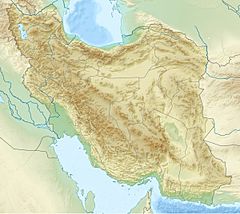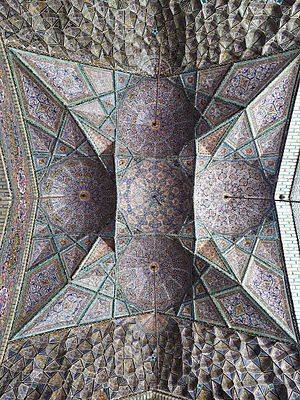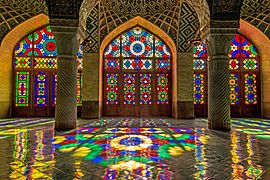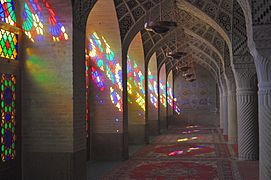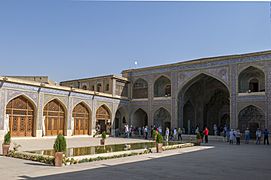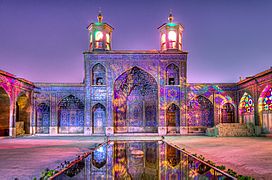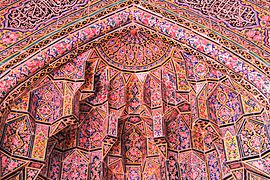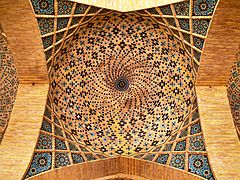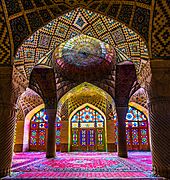Nasir-ol-Molk Mosque facts for kids
Quick facts for kids Nasir al-Mulk Mosque |
|
|---|---|
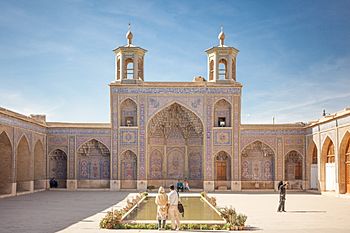 |
|
| Religion | |
| Affiliation | Shia Islam |
| Province | Fars Province |
| Status | Active |
| Location | |
| Location | Shiraz, Iran |
| Municipality | Shiraz County |
| Architecture | |
| Architectural type | Mosque |
| Architectural style | Iranian architecture |
| Completed | 1888 |
| Website | |
| http://nasiralmulk.ir/ | |
The Nasir al-Mulk Mosque is a beautiful old mosque in Shiraz, Iran. People often call it the Pink Mosque because of its colorful tiles. It is famous for its stunning stained glass windows. The mosque was built a long time ago, during the Qajar dynasty. It is still used today and is a popular place for visitors.
Contents
History of the Pink Mosque
The Nasir al-Mulk Mosque was built during the time of the Qajar dynasty. This was a royal family that ruled Iran from 1789 to 1925. Construction of the mosque started in 1876. It was ordered by Mirza Hassan Ali Nasir-ol-Mulk. He was an important lord from Shiraz. The mosque was finished in 1888.
The main designers were Mohammad Hasan-e-Memār and Mohammad Hosseini Shirazi. Another person, Mohammad Rezā Kāshi-Sāz-e-Širāzi, also helped. Mohammad Hasan-e-Memār had also designed the famous Eram Garden before this mosque.
Orsi: Persian Stained Glass Windows
You might think of stained glass mostly in churches. However, colorful glass has been used in buildings for a very long time. In Persia, special windows called Orsi windows were popular. These windows are made from wood and colorful glass. They were used during the Safavid and Qajar dynasties.
Orsi windows are different from some other stained glass. They are designed to let light shine through in a beautiful way. They don't usually show pictures like some church windows. Light is very important in many mosques. It is seen as a symbol of God in Islam. The Quran, the holy book of Islam, even mentions this:
″Allah is the light of the heavens and the earth″
Gallery
See also
 In Spanish: Mezquita Nasir ol Molk para niños
In Spanish: Mezquita Nasir ol Molk para niños
- List of mosques in Iran
- Architecture of Iran
Images for kids


